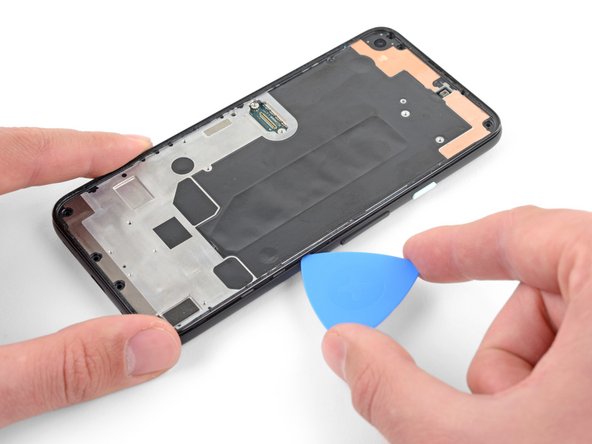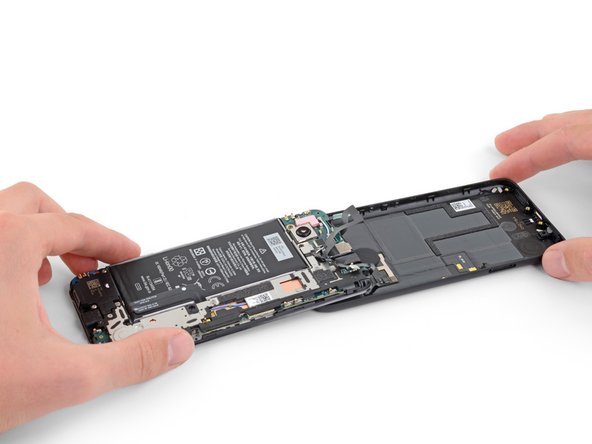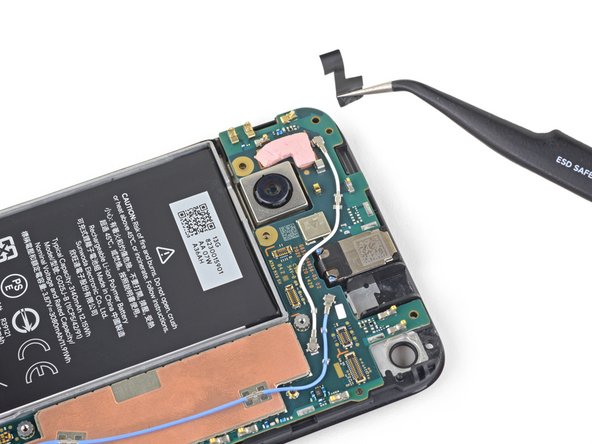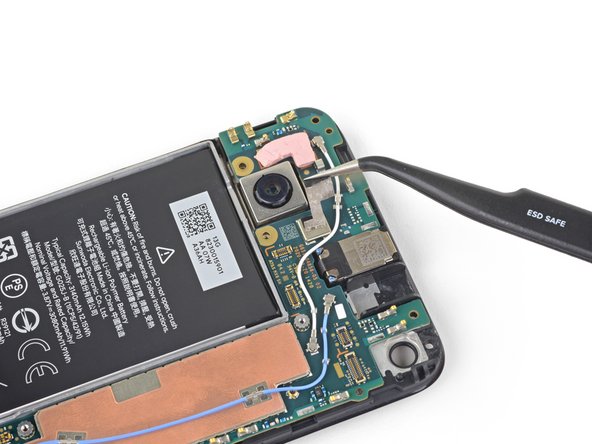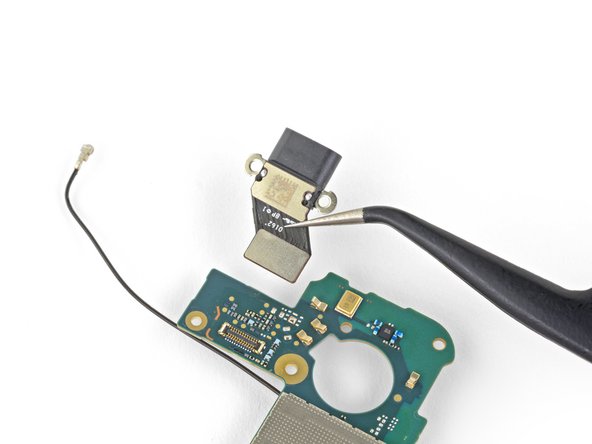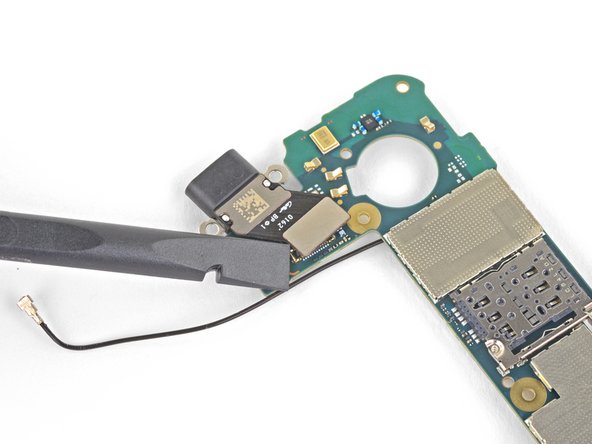Google Pixel 4a Charging Port Replacement Guide: DIY Repair Tutorial for Experts
Duration: 45 minutes
Steps: 42 Steps
This repair guide is brought to you by the Salvation Repair crew. We didn’t get permission from Google, but that’s okay – we’re good like that. Check out our other repair guides here. schedule a repair
The display panel on the Pixel 4a is delicate, so be careful when handling it. But hey, you’re a pro! You got this.
Hey there, techie! This step-by-step guide will help you swap out that charging port on your Google Pixel 4a like a pro. This Pixel 4a’s display is a bit delicate, so let’s be extra careful when opening things up. If you’re reusing the screen, pay close attention to those warnings in the opening steps. If you need help, you can always schedule a repair.
Step 1
– Pop a SIM eject tool, bit, or straightened paper clip into the SIM tray hole.
– Press into the hole to pop out the SIM card tray.
– Take out the SIM card tray.
Step 2
Heads up! There’s an orange ribbon cable under the screen’s lower-right corner. It’s super sensitive to damage, so be careful with your opening pick. Just slide it in as far as you need to loosen the adhesive – no need to go overboard! If you need help, you can always schedule a repair.
You’ll need to carefully pry the screen up to remove it from your phone. Check out these notes before you start. If you need help, you can always schedule a repair.
– Let’s get started by checking out the two seams on the edge of your phone:
– Before you dive in, take a look at these important areas on the screen:
– Screen seam: This is the line that separates the screen from the rest of the phone. It’s where you’ll want to carefully pry open your device.
– Frame seam: This is where the plastic frame meets the back cover, held together with screws. Be careful not to pry at this seam, or you might damage something.
– Screen flex cable: When you’re using your opening pick, make sure not to insert it too far, or you might damage this important cable.
– Adhesive perimeter: When prying, stay within this narrow area and angle your pick to avoid damaging the OLED panel. If you need help, you can always schedule a repair
Step 3
You can use a hair dryer, heat gun, or hot plate to get things warmed up, but remember to keep an eye on the heat! Too much warmth can be tough on your phone’s display and internal battery. Stay cool while you heat things up!
– Warm up that trusty iOpener and give the right edge of the display a cozy minute to loosen up the adhesive. You got this!
Tools Used
Step 4
If your screen is badly cracked, don’t worry – we’ve got you covered. Try covering it with clear packing tape to help the suction cup stick. If that doesn’t work, super strong tape can be a great alternative. And if all else fails, a little superglue can be your best friend to get that suction cup to stay put. If you need help, you can always schedule a repair
– Alrighty, let’s get this show on the road! Position a snazzy suction cup near the screen’s edge, if you know what I mean. Heave-ho, give that cup some serious lift! Now, slide in that handy-dandy opening pick, no bigger than a millimeter, gotta be careful!
Step 5
If you feel the pick bumping against something, you might be hitting the OLED panel. Just angle that pick a little and try again, you’ve got this!
Let’s get started with this step! To avoid damaging the OLED panel, make sure to insert the pick carefully before you begin slicing through the adhesive. If you need help, you can always schedule a repair
– Ready to rock this repair? Grab that pick, slide it into the gap, just 1 mm deep. Now, give it a little lift to a nice steep angle. That’s the spirit!
– Keep that pick at that awesome angle, and push it in about a quarter inch (6 mm) – you’re aiming to slide it under the OLED panel. You got this!
Step 6
Be careful not to insert the pick more than 1/4 inch (6 mm) into your device, or you might accidentally damage the screen’s flex cable. If you need help, you can always schedule a repair
Step 7
Be careful when working under the bottom-right corner of the screen – there’s a delicate cable hiding out. If your opening pick catches on something, don’t force it. Instead, pull it out and try again with a shallower angle, making sure to only insert the pick as far as necessary (about 2 mm deep) to avoid any damage. If you need help, you can always schedule a repair
– Gently slide another opening pick into the right edge of your phone at a cozy angle where a gap has already popped up—this will help keep your OLED panel safe and sound.
– Now, glide that opening pick around the bottom of the phone to slice through the adhesive like a pro.
– Keep that pick snugly in place along the bottom edge to stop the adhesive from getting all clingy again.
Step 8
If the screen is putting up a bit of a fight, warm up the left edge for a minute and give it another go.
– Now it’s time to add another opening pick to the bottom edge of your phone, slipping it in at an angle where you’ve already created a gap – this will help keep your OLED panel safe and sound.
– Use your trusty pick to carefully slice through the adhesive on the left edge of your phone, working your way along the seam.
– Leave that pick in place along the left edge to prevent the adhesive from re-sealing, making the rest of your repair a whole lot easier. If you need help, you can always schedule a repair
Step 9
You’ll see a mesh covering the earpiece speaker on the top edge of the screen. Be careful not to damage or lose this tiny mesh if you don’t have a replacement.
If the screen feels a little stubborn to cut, give the top edge a quick 1-minute heat bath and try again. You got this!
– Alright, let’s get this party started! Carefully slide another opening pick into the left edge of the phone where you’ve already created a gap. We don’t want to hurt that OLED panel, right? Now, slide the pick around the top edge, cutting through the adhesive. It’s like butter, you got this! If you need help, you can always schedule a repair
Step 10
Hold your horses! Don’t yank that screen off just yet.
– Time to get this phone open like a good book! Carefully cut around the phone’s edges with your trusty tool, and then lift the right side gently. You got this!
– Now, use an opening pick to gently break through any leftover glue. Don’t worry, it’s all part of the fun (and the fix!).
Step 11
Easy does it! Don’t put any pressure on that little ribbon cable. Be gentle, like a kitten playing with yarn!
Step 12
– Grab your trusty tweezers and gently lift the black tape that’s holding down the screen connector bracket. It’s like unwrapping a present, but way more satisfying!
– If the tape is still in good shape, give it a second chance during reassembly. If it’s looking a little worse for wear, no worries! Just swap it out for a piece of electrical tape.
Tools Used
Step 13
Keep it together – literally! During this repair, make sure to keep track of each screw and return it to its original spot. If you need help, you can always schedule a repair
– Grab your trusty T3 Torx driver and unscrew those two 2.1 mm screws holding the screen connector bracket in place. You’ve got this!
Step 14
– Grab your trusty tweezers and carefully remove the screen connector bracket – it’s a delicate part, so be gentle!
– Hang on to this little guy, you’ll need to put it back where it belongs when you’re reassembling everything. If you need help, you can always schedule a repair
Tools Used
Step 15
– Grab your trusty spudger and gently pry up to disconnect the screen flex cable. Easy peasy!
– When it’s time to reconnect, just align those connectors like a pro, press down on one side until you hear that satisfying click, and then do the same on the other side. Avoid pressing down in the middle though—nobody wants bent pins and a sad device. If you’re feeling unsure, remember, help is just a click away. You can always schedule a repair!
Tools Used
Step 16
Alright, cool cat, so after you put everything back together, the screen will do a little dance to get ready. Don’t get your fingers all up in there! Let it do its thing, or you might end up with some funky touch issues. No worries, though, if you need help, you can always schedule a repair.
Check out that third photo to help you get your adhesives in the right spot!
– First up, let’s get that screen off!
– Now, time to install your shiny new screen:
– Take a peek and see if your replacement screen has the speaker mesh and top edge adhesive already on it.
– Need a hand with the custom-cut adhesive? Just follow the guide for that.
– If it’s got the adhesive, you can skip the top edge part altogether.
– If it doesn’t, peel off the larger clear liner from the top edge adhesive and stick it on the screen (not the frame!). Just make sure that larger cutout matches up perfectly with the speaker mesh.
Step 17
– Let’s get this party started! Use a T3 Torx driver to remove the eight 4.3 mm screws holding the back cover to the midframe. If you need help, you can always schedule a repair
Step 18
– Let’s get this party started by slipping an opening pick into the groove between the midframe and the back cover.
– Now, slide that pick along the bottom edge, like you’re giving the phone a little love tap. This’ll loosen up those pesky plastic clips holding the back cover in place.
Step 19
– Gently glide the opening pick along the left edge of your phone to pop those plastic clips free, letting the back cover detach from the midframe like a pro!
Step 20
– Work the opening pick around the top and right edges of your phone to pop those clips free. If you need help, you can always schedule a repair.
Step 21
– Alright, now it’s time to give that back cover a little swing! Carefully lift it from the bottom, gently guiding it over the top and around the back of the phone.
– Next, lay that back cover down on your work surface and let the midframe rest on top of it. Just be sure to keep things nice and relaxed so you don’t put any pressure on those delicate ribbon cables. You got this!
Step 22
– Alright, let’s get this party started! Grab your trusty T3 Torx driver and let’s loosen those seven screws holding the motherboard bracket in place. You’ll see three 2.9 mm-long black screws, three 2 mm-long screws, and one 4.1 mm-long screw. You got this!
– If you need help, you can always schedule a repair
Step 23
– Gently use the tip of a spudger to pop the motherboard bracket loose from the upper-right and lower-right corners of the motherboard. You’ve got this!
Tools Used
Step 24
– Grab a trusty pair of tweezers and gently lift out the motherboard bracket. You’ve got this!
Tools Used
Step 26
– Grab your trusty spudger and gently pry apart those two flex cables that link the fingerprint sensor and buttons to the motherboard. You’ve got this!
Tools Used
Step 27
– Alrighty, let’s get this party started! Time to uncover the secret chambers of your device. Lend me your ear, and I’ll guide you through this engaging adventure. First things first, let’s show our device some fresh air and peel off its shiny metallic back cover. Feel free to high-five your device later for its bravery. If you need help, you can always schedule a repair and we’ll be your trusty sidekicks!
Step 28
– Gently use the spudger’s tip to unplug the headphone jack cable from the motherboard. You’ve got this!
Tools Used
Step 29
– Let’s loosen that headphone jack! Carefully slide an opening pick under the headphone jack and give it a little twist to break free from the adhesive holding it to the midframe.
– Now, gently remove the headphone jack. You’re doing great!
Step 30
– Time to give that front-facing camera a little wiggle room! Gently pry it up from the motherboard using the flat end of your trusty spudger. Don’t worry, it’s just a little dance to set it free.
Tools Used
Step 31
– Time to get up close and personal with that front-facing camera! Use a trusty pair of tweezers to carefully remove it. If you need help, you can always schedule a repair
Tools Used
Step 32
– Grab your trusty T3 Torx driver and unscrew those two 4.1 mm screws holding the loudspeaker assembly in place. You’ve got this!
Step 33
Be gentle when handling the speaker, and try not to puncture the white membrane on either side – it’s a delicate part, and you’ll want to keep it intact if you plan on reusing it. If you need help, you can always schedule a repair
– Slide a spudger under the loudspeaker assembly, like you’re giving it a little nudge.
– Carefully flip the loudspeaker assembly over, letting it rest on top of the battery like a friendly little pillow.
Tools Used
Step 34
– Gently pry the antenna flex cable away from the loudspeaker assembly using the tip of a spudger. You’re doing great!
Tools Used
Step 35
When handling the speaker, be gentle to avoid puncturing the white membrane on either side – you’ll want to keep it intact if you plan on reusing it. If you need help, you can always schedule a repair
– Time to give that speaker some freedom! Gently peel up the loudspeaker assembly, freeing it from the tape underneath.
– Now, let’s give that loudspeaker assembly a little air. Remove it carefully.
Step 36
– Now, let’s gently disconnect that loudspeaker cable from the motherboard using the tip of your spudger. It’s like giving the cable a little high five, but with a tool! If you need help, you can always schedule a repair
Tools Used
Step 37
– Grab your trusty T3 Torx driver and let’s tackle those screws holding the motherboard in place:
– Two black screws, each measuring 2.9 mm long, ready to be unscrewed.
– One slightly shorter screw, just 2.1 mm long, waiting for its turn.
Step 38
– Grab the corner of an opening pick and gently lift the tape that’s hiding the earpiece speaker. You’ve got this!
Step 39
– Get ready to unstick, as we’re gonna boldly remove the tape covering the earpiece speaker with the help of some tweezers. Once it’s off, don’t sweat it – we ain’t putting this tape back on during reassembly! If you need help at any stage, you can always schedule a repair.
Tools Used
Step 40
– Slide the tip of a spudger under the bottom edge of the motherboard and gently lift it up until you can comfortably grab it with your fingers.
Tools Used
Step 41
– Alright, time to pull out the motherboard. It’s like giving your device a little heart transplant – a little tricky but worth it! If you need help, you can always schedule a repair
Step 42
– Time to get started! Use the flat edge of a spudger to carefully disconnect the charging port from the motherboard – it’s like freeing a stuck part!
– Now, go ahead and remove the charging port. If you need help, you can always schedule a repair
Tools Used
















































